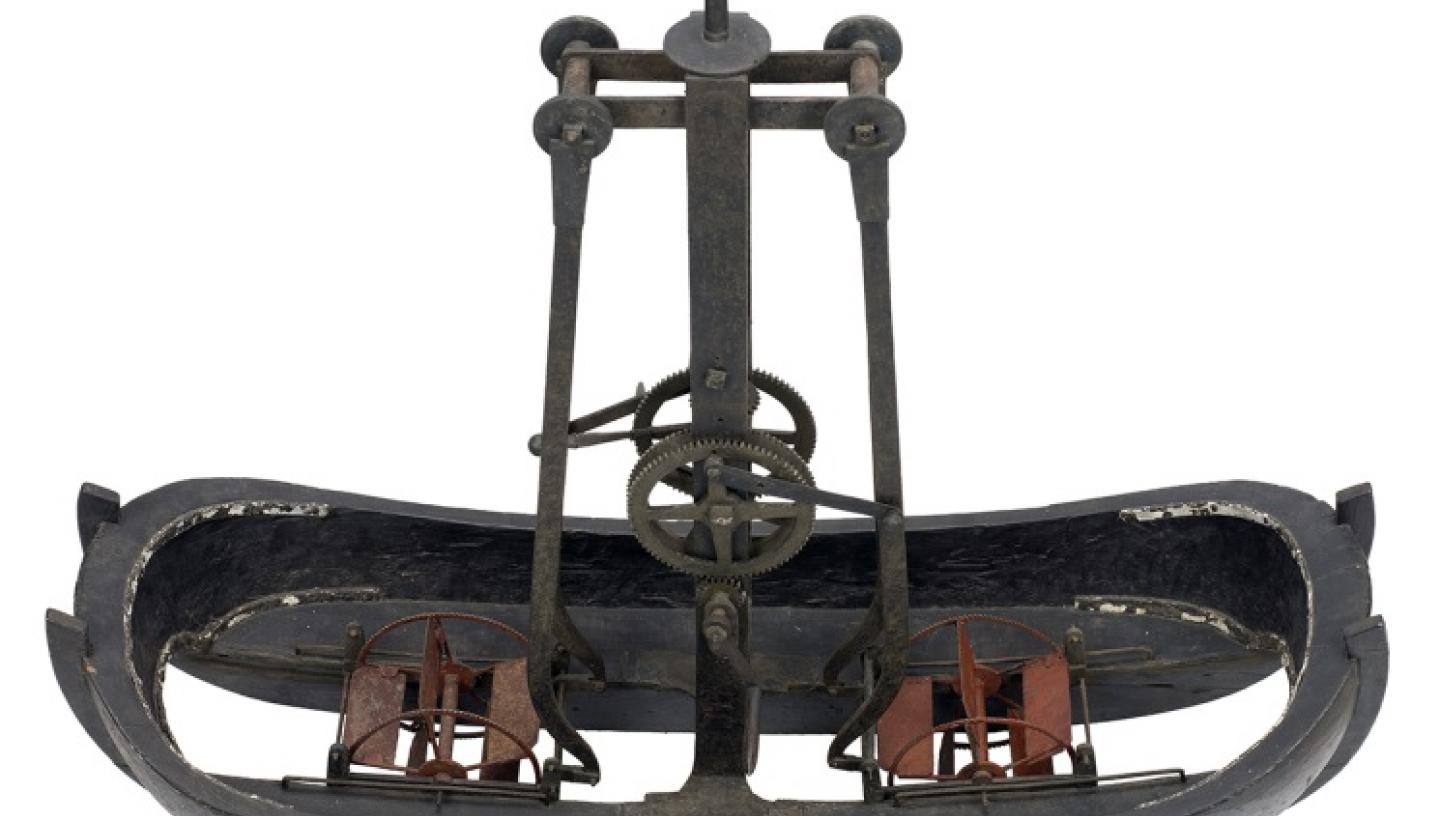
Essential Information
| Location |
National Maritime Museum
|
|---|---|
01 May 2015
Our conservation team have been treating one of the many beautiful models in our collection, but can you help identify what it is?
Sometimes, even with our wealth of expertise in all things maritime, a model will come along that has us completely foxed. Perhaps you can help? The conservation department have been busily working with our photographic studio to give you as many visual clues as possible.
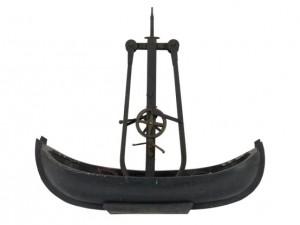
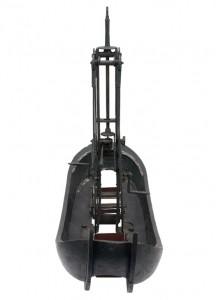
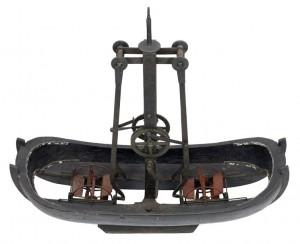
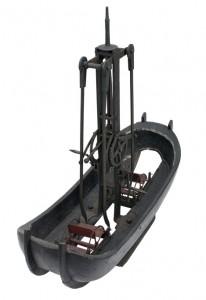
What do we already know?
The paddle wheels are placed in line in the centre of a shallow hull. The hull is fitted with bilge, or twin, keels suggesting that the vessel could be used in tidal reaches allowing her to rest on the mud at low tide. The paddle wheels have no direct rotational drive and the cranked mechanism is designed to move them in a lateral motion fore and aft. This can also be used, when the drive gear is engaged, to rotate the top mast which has a fixing hole through it. The rotation of the paddle wheels is solely dependent on water flow. There are no signs of drive chains from the paddle wheels to the central mechanism or rotating top mast, hence ruling out the notion of this being a boat mill, and the teeth on the outer edge of the paddle wheels are designed for a ratchet mechanism to stop the rotation of one wheel at a time. The vessel is symmetrical with no discernible bow or stern and both are buffered with built in wooden fenders. Below the circular base of the top mast there appears to be a fixed marine block with channels for ropes or cables.
To help, here is a selection of our thoughts from the conservation and curatorial team:
Was she a hand cranked or cable driven river ferry? The mechanism could be employed in this manner and the symmetrical nature of her design and buffered bow and stern would lend themselves to this purpose however, why would you have inboard paddle wheels taking up the majority of cargo and passenger space? Was she used for river or canal clearance with the wheels employed to clear reeds and debris? However, if the model is to scale she was probably too tall to negotiate most British canal tunnels. It has been suggested that her hull design has a Dutch influence – could she have cleared ice on the canal system in the Netherlands? Perhaps her intention was to agitate water. Being on a fixed mooring with water passing through the paddle wheels could she have been used to aerate water or something more specific like assisting with gold panning? It would be great to hear what you think in the comments section below, if you have any further questions just ask!